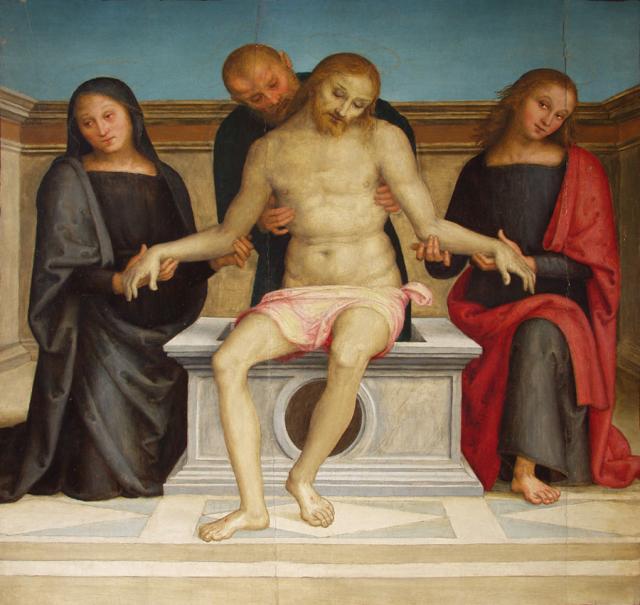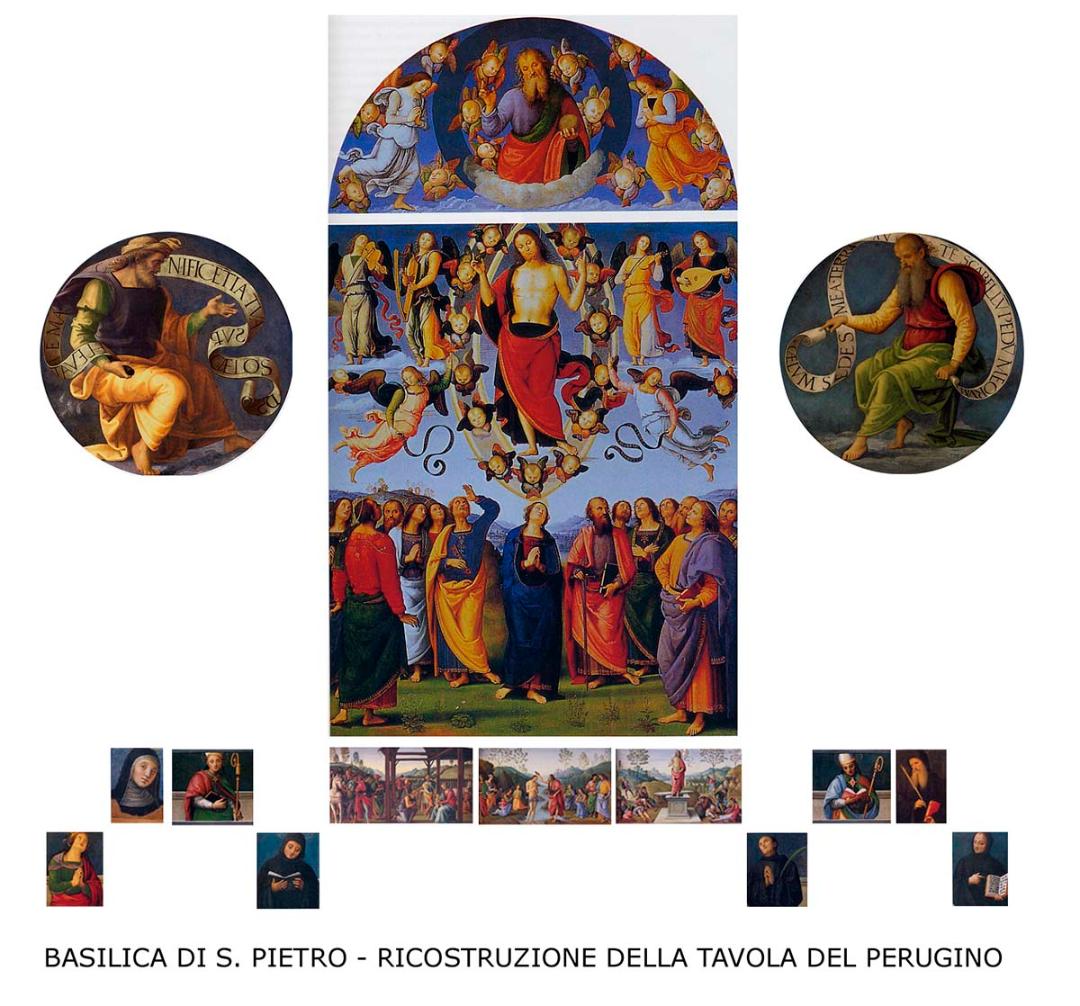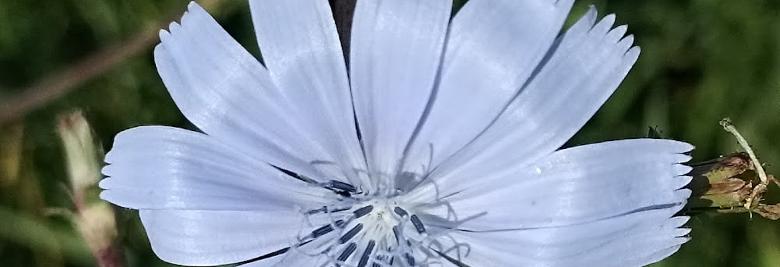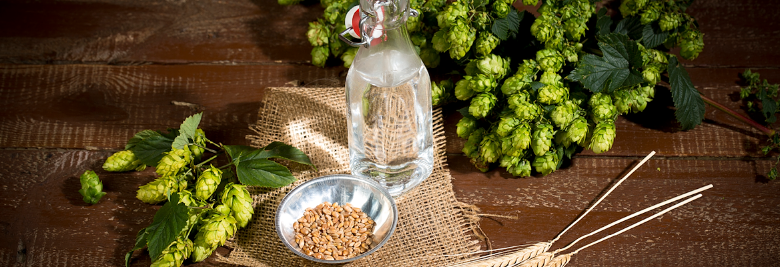The church has a basilica-style layout with three naves divided by columns with Ionic capitals of the late imperial period, and in its nave it has large paintings depicting scenes from the Old and New Testament written by l'Aliense (1592-94), which are framed in a fresco decoration that creates space between the paintings, arches and underarches, and continues even in the aisles. The altar consists of columns, pillars, recesses and domes made from rare polychrome marbles.
The right nave depicts characters linked to the church such as San Pietro Vincioli, San Benedetto, Santa Scolastica, San Mauro and San Gregorio Magno.
Along the wall are also the Cappella di San Giuseppe chapel, decorated in 1855 by Domenico Bruschi, and the Capella delle Reliquie chapel, with a wrought iron gate and 16th century stucco and frescoes by Benedetto Bandiera. On either side of the entrance to the presbytery are two paintings by Giovanni Domenico Cerrini (Mary nursing the Child and Saint John the Baptist). Inside the presbytery are the wooden choir stalls (dating from 1525-1535), which are among the most beautiful in Italy.
The sacristy, built in 1451, is home to frescoes on its ceiling; it has The Old Testament Stories, which is perhaps by a Flemish master, while on the walls is Stories from the Lives of Saints Peter and Paul by Vincenzo Danti, a Michelangelo style artist, and 5 small paintings by Perugino with images of saints for the Feast of Ascension, requisitioned by the French and today in Lyon.
Along the walls of the left nave are notable works such as Pietà, part of the broken altarpiece for Sant'Agostino from the church of Sant'Agostino by Pietro Perugino. In the Vibi chapel notable works include the marble Dossale of the Young Jesus, the Baptist, and Saint Girolamo attributed to Mino da Fiesole (dating from 1453), Annunciation by Giovan Battista Caporali and Visitation by Stefano Ciburri (dating from 1530). Next is the Ranieri chapel with a ceiling decorated with paintings by Annibale Brugnoli (XIX) over a work by Caporali. The Sacramento chapel has instead a ceiling decorated by Francesco Appiani and Pietro Carattoli. On the altar is a picture of the Madonna of Giglio from the 14th century in the centre of a painting depicting Saints Peter and Paul by Jean Baptiste Wicar (19th century).
On the opposite wall is a large painting from the end of the 16th century with the Triumpth of the Benedictine Order.
Upon leaving the church, pasing through the first cloister, which has already been mentioned, take the corridor leading to the second cloister set on three floors with a well in the centre. Still ahead is the old refectory with a sink in glazed terracotta depicting the Samaritan at the well work from the 15th century by Benedetto Buglione. A third cloister also known as ‘cloister of the stars' is the work of Galeazzo Alessi.
Curiosity
In the monks' former fish farm there is a medieval garden which is an interesting symbol of the garden of yesteryear. Nearby is the botanical garden, which also contains an Alpine garden, a Zen garden and a pond with shade-loving plants. Today the botanical garden plays an important role in teaching visitors about interacting with nature and the environment.
Useful information
The church is located in the southern part of the city and is easily accessible on foot; visitors can leave their cars in the car parks surrounding the historical centre.
































.jpg/eb9c7bda-4c22-7f45-7e45-d71115bb9735?width=780)





